Mk I Lotus Cortina – The Original Lotus Tuned Car

Photo: Bonhams
TTAC contributor Abraham Drimmer has a fine piece over at Road & Track about his favorite cars that resulted from collaborations between Lotus and other, usually much larger, automobile manufacturers. Each of Abe’s five choices are worthy of note in their own way: the Isuzu Impulse, the C4 Corvette ZR-1, the Lotus Sunbeam, the Lotus Carlton, and the DeLorean DMC-12, but Mr. Drimmer is a relative youngun, so I wasn’t surprised that left off of his R&T list was the original ‘tuned by Lotus but sold by another company’ car. It’s the Lotus tuned car that Lotus purists are most likely consider to be a genuine Lotus and not an Isuzu, Chevy, Chrysler, Vauxhall or DeLorean. In some cases it fetches prices north of its contemporary Elans. It has a pedigree that includes some of the greatest luminaries of British motordom and it helped to establish the foundation of a relationship that would eventually revolutionize motorsports. According to Lotus’ factory nomenclature, it’s a Type 28, according to the sales brochures it was the Ford Cortina Lotus and according to just about everybody else who knows about it, it’s called the Lotus Cortina.
The Lotus Cortina grew out of the development of the Lotus Elan, first introduced in 1962. The first Lotus developed primarily as a road car was the revolutionary Elite that featured a fiberglass monocoque and was powered by a Coventry Climax engine. Though it was a technical success, finding a vendor that could reliably supply bodies of sufficient quality made from the then new composite material drove up costs, as did the pricey all-aluminum racing engine. As a result, economies of scale were not achieved and Lotus lost money on every Elite they sold. Colin Chapman was resolved that Lotus’ next road car would cost less to make and that it would be powered by something based on a mass produced engine. The young Cosworth company had shown some success tuning Ford’s “Kent” four cylinder engine, developed for the Anglia in the late 1950s. Using modern casting techniques Ford was able to make a cast iron engine block that didn’t weigh much more than one made of aluminum, however its potential was limited by the head design. Chapman decided that giving the Kent block a double overhead cam aluminum head with hemispherical combustion chambers, like that on the Jaguar XJ engine, would make sufficient power for his new road car as well as being the basis for a racing engine. He hired Harry Mundy, who with Walter Hassan had designed that same Jaguar engine, offering him a one pound sterling per engine royalty fee or 1,000 pounds up front. Since Lotus was a bit of a hand to mouth enterprise in those days, Mundy took the money, which he would later regret as eventually about 40,000 Lotus Twin Cam engines were made.
The cross flow Twin Cam head has two valves per cylinder set at a narrow 27 degree angle to each other. Mundy used such a narrow angle to prevent interference with less expensive, conventional (i.e. non wedge) pistons. In development it was discovered that the theoretically non-ideal valve angle fortuitously resulted in more turbulence and more complete combustion. Cast into the head were intake runners that carried the fuel/air mixture from two two-barrel sidedraft 40DCOE Weber carburetors with short velocity stacks mounted inside an airbox connected to the air cleaner. When introduced, the Twin Cam had 105 horsepower, while later versions would have as much as 140. It’s a highly tunable engine that breathes and revs freely. Race versions can have 180 hp or more, but 165 hp is usually considered the limit for a streetable car.
By the time the Elan started production, the Kent block had been developed into the 116E version with 1,499 cc displacement and five main bearings. Chapman acquired one of the earliest 116E castings, put the DOHC head on it and sent Jim Clark out to race a Lotus 23 with it in a FIA Group 4 event. It was determined that some production blocks had thicker cylinder walls than others, allowing slightly larger bores. Those were bored out to 1,557 cc for production Elans. The most robust blocks were given another millimeter of bore, increasing displacement to 1,598 cc, perfect for the then new Group 2 production car racing rules.
In the early 1960s the Ford Motor Company, under the slogan of “Total Performance”, embarked on a broad motorsports agenda that would eventually lead to great success at LeMans, Indianapolis and in Formula 1. Those big Ford wins would start in 1965, when Jim Clark won the Indy 500 at the wheel of a Lotus 38 powered by a Ford V8. Ford didn’t just decide to fund Lotus’ Indy effort out of thin air, the huge Dearborn automaker and the tiny British specialist already had success working together in Group 2 with a Lotus powered Cortina.
Walter Hayes was a British journalist who went to work doing public relations for Ford and was instrumental in the Total Performance program. In time Colin Chapman would convince Hayes to commit 100,000 pounds of Ford’s money to fund the development of the landmark Cosworth Ford DFV engine that went on to great success in F1, but in 1962, it was Hayes who commissioned Chapman for Lotus to develop Ford’s Group 2 racing effort, to be based on the upcoming Cortina sedan, which was going to be launched in 1963.
Hayes was in charge of the UK part of Ford’s 5 year plan to dominate auto racing and by mid 1962 he had heard of what Chapman and his boffins were doing with a Ford block and their own heads. Lotus has almost always existed in precarious financial circumstance, all the more so in the early days. Chapman saw the deal with Ford as a possible lifesaver for his company and in many ways it allowed the company to get established as a legitimate, albeit small, manufacturer of road cars. Ultimately, the deal with Ford made Lotus a household name among auto and racing enthusiasts.
To go racing in Group 2, rules required 1,000 production cars to be made for homologation purposes. Final assembly was assigned to Lotus, which partly explains why the model is considered by brand enthusiasts to be a Lotus, not a Ford. It really was a deal that Chapman couldn’t refuse since the cars would be sold as Fords, by Ford dealers, with the huge automaker promoting the Lotus brand. Part of the relationship between the two companies also involved Ford supplying Lotus with components. In addition to the Ford engine block, the Elan used a Cortina based transmission and while the Elan’s differential housing is a custom aluminum Lotus casting, the internal parts are also sourced from the Cortina. That deal would incidentally benefit owners of Lotus cars and later Lotus restorers because many Lotus parts from that era also have a Ford part number, including everything that goes into making the Twin Cam engine.
Lotus’ revisions to the Cortina were extensive and went far beyond just an engine swap. Bodies were pulled off the regular Dagenham production line to be modified on a dedicated line per Lotus designs and then installed with parts common with regular Cortinas like glass, heaters, lights and locks before they were shipped to Lotus’ factory in Cheshunt for final assembly.
The 105 horsepower Twin Cam was given a cold air intake in the nose of the car and a larger capacity radiator than was used in the regular Cortina was installed. The Elan’s close ratio gearbox was used and it had an aluminum tailpiece and bell housing. A single piece driveshaft ran to the rear end.
The original coil spring A-frame rear suspension for the Lotus Cortina was too fragile. Custom leaf springs and radius arms proved to work just as well, and were cheaper to build.
Early Mk I Lotus Cortinas had a trick rear suspension that replaced the leaf springs with coils and located the solid rear axle with radius arms and a wide A frame member, similar to one of the rear suspensions used in the Lotus Seven. When that suspension proved to be fragile, Lotus reverted to leaf springs with reversed mounting eyes, along with the radius arms. The simpler suspension proved to handle just as well in competition.
To match the lowered rear suspension, up front the springs were shortened and the McPherson struts were calibrated for stiffer damping. Longer, forged control arms were installed to eliminate wheel camber changes and a thicker anti-roll bar with longer ends was installed to reduce castor. A high geared steering box and different steering arms were used to increase the effective steering ratio while reducing the Ackermann angle.
Girling supplied the brakes with 9.5″ discs up front and 9″ drums in the back. A vacuum booster provided braking assist. The Lotus variant was the first Cortina model with power assisted disk brakes. Tires were originally bias ply, later switched to radials as they became available, and were size 6.00″ X 13″ mounted on 5.5″ wide steel wheels featuring chromed “dog dish” hubcaps (standard Cortina tires were 5.20″ X 13″ on 4″ rims).
Inside, a 15″ wooden rim Lotus steering wheel was installed as were special seats with better lateral support, more rake and greater comfort. A center console was installed featuring a elbow rest and a storage cubby. A custom aluminum faced cluster featured full instrumentation including a 140 mph speedo and an 8,000 rpm tach. Completing Lotus’ spec on the inside was a pear shaped wooden Lotus gear shift knob.
The reason why the Ford factory did the body mods is that they were too extensive to be done post production. The battery tray was moved to the trunk/boot for better weight distribution. Reinforcing tubes were welded in between the top rear shock absorber mounts and the spring shackle mounts on each side of the trunk to stiffen the structure. The trunk floor was modified to restore clearance over the differential after the suspension was lowered. Early models had brackets welded in for mounting the rear suspension’s A frame, while later Lotus Cortinas had mounting brackets for the radius arms. The rear frame rails were reinforced. The hood, trunk lid and door skins were made of aluminium. Before shipment to Cheshunt, the bodies in white were in fact painted in Ermine White by Ford. Lotus added the signature Sherwood Green side stripes and rear valence. The green was presumably chosen because Lotus’ traditional racing colors were green and yellow. Lotus badges were painted on the rear flanks and a cloisonne badge was mounted on the right hand side of the front grille. The bodywork behind the grille was blacked out. The rear quarter bumpers from a Ford Anglia van were repurposed for the Lotus Cortina’s front end.
The result was a car with an aggressive, purposeful stance, accentuated by the arrow shaped stripes. In the UK, because of the green stripe and lowered suspension, Lotus Cortinas were immediately identifiable from more mundane Cortinas. The car got rave reviews in both the UK and the United States. I haven’t been able to determine just how many of the 2,894 Mk I Lotus Cortinas made it to these shores, but Ford dealers here did sell the car in a left hand drive version.
The well known image of Jim Clark cornering hard, lifting a wheel.
Production began in early 1963 and Chapman and the Lotus racing team spent much of the year preparing racing versions. The Lotus Cortina’s competition debut was in September 1963 at Oulton Park, where Jack Sears won his class in a works car. It was only the first win in an impressive competition career. In 1964 Jim Clark, who was used as a development driver for the car and who used a Lotus Cortina as his personal car, won the overall British Touring Car Championship for the Lotus works team. Clark cornering his Cortina on three wheels, with the inner front wheel a half foot off of the ground, a serene look on Clark’s face, has become such an iconic image that more than one artist has been inspired by it.
Artist Chris Dugan’s rendering of Jim Clark and his Lotus Cortina
The Lotus Cortina went on to dominate the 2 liter class in saloon road racing, often competing for outright wins. Factory cars were raced by Clark, Graham Hill, Peter Arundell and Jackie Ickx to considerable success and Sir John Whitmore won the 1965 European Touring Car Championship in a privately owned Lotus Cortina. The Lotus-Ford sedan just about owned saloon racing in 1965, with Jack Sears winning the C class in the British Saloon Car Championship, Jackie Ickx winning the Belgian Saloon Car Championship, and a Lotus-Cortina winning the Gold Star Saloon Car Championship in New Zealand. Other notable wins in 1965 were at the Nuburgring Six-Hour race, the Swedish National Track Championship, and the Snetterton 500.
Jim Clark may have gotten a wheel off of the ground but Bengt Soderstrom got all four wheels of his Lotus Cortina rally car airborne
Once the rear suspension was changed to the more durable leaf spring setup, the Lotus Cortina also proved to be a competitive rally car with factory driver Bengt Soderstrom winning the Acropolis and Royal Automobile Club rallies in 1966.
When the second generation Cortina was introduced in 1966, a Lotus version of that car was also manufactured and sold, but it wasn’t as hardcore as the Mk I Lotus Cortina and while it has its enthusiasts today, the Mk II isn’t nearly as collectible as the original.
What’s it like to drive? A complete blast. How do I know? Not too long after I got my driver’s license in the early 1970s, my older brother Jeff decided to replace his 1965 Buick Special convertible with a 1966 Lotus Cortina. Jeff taught me how to drive a stick shift in that car and when he spent a year servicing machinery on a kibbutz in Israel, I used the Cortina to drive home from college in Ann Arbor. Yes, it had all of the flaws of British cars of that era, we called it the “Gorktina”, the starter motors were particularly unreliable, however it jump started easily and once it was running it drove flawlessly. Fast, comfortable and it could carry your whole crew. Think of a BMW 2002, a tuned Datsun 510, or the 190E “Cosworth” Mercedes-Benz that our Editor in Chief pro tem so loves, before such cars existed. The handling was as you’d expect from Lotus, in fact it inspired a friend of our to buy an Europa and me to buy my Elan. We all knew that Jeff’s car was special. We’re not the only ones. Fifth Gear calls it a “performance car icon” and “the daddy of all super saloons”.
Chapman’s philosophy of soft springs and stiff shocks gave it a reasonably comfortable ride. Plus, it was quick. While 110 hp may not seem like much today, the car weighed less than 2,000 lbs and the Twin Cam pulls from idle and revs well enough that they came with governors in the distributor to keep things below 6,000 rpm.
Sir Jack Brabham, who recently passed away, leads Jim Clark’s Lotus Cortina with a Mustang. Oulton Park, 1965. Competing in the 2 liter class, the Lotus Cortina challenged cars with much bigger engines.
Though in the UK the distinctive livery and stance made the Lotus Cortina highly visible, in the United States, particularly driving around Detroit where we lived, it was just an obscure British Ford. Since it was a small European sedan nobody driving a America muscle car with a small block or bigger V8 would think it was some kind of performance car. Of course, in the 1960s the measure of performance in Detroit’s car culture was straight line speed, measured stoplight to stoplight on Woodward or Gratiot. If things went well, and they usually did, at the next light, when the Mustang or Mopar driver would ask “Whachu got in that thing?!”, replying “A 96 cubic inch four cylinder” came with a certain amount of satisfaction (and pride in high specific output motors).
As mentioned, today Mk I Lotus Cortinas are highly collectible. With less than 3,000 made, they are far rarer than the Elans and Europas of similar vintage and while Elans have significantly appreciated, as folks like Jay Leno and Gordon Murray sing their praises, a nice Lotus Cortina can sell for more than the nicest Elan. A superb Elan today might sell for as much as $40,000. Last September at a Bonhams auction held in conjunction with the Goodwood Revival a ’66 Mk I Lotus Cortina sold for the equivalent of $73,703 and a month earlier at the Quail Lodge sale Bonhams hammered off a one owner, 6,200 mile barn find 1966 Lotus Cortina that sold for $115,000. The Lotus team car in the famous Jim Clark photo above sold in 2007 for £136,800 (US$ 230,723) including the auctioneers’ fee. Not bad for a funny looking English car with a 96 cubic inch four. If you’d like one for yourself, Bonhams will be selling a race prepped ’65 with 170 hp and a limited slip rear end this fall at Goodwood.
Modern photos courtesy of Bonhams.
Ronnie Schreiber edits Cars In Depth, a realistic perspective on cars & car culture and the original 3D car site. If you found this post worthwhile, you can get a parallax view at Cars In Depth. If the 3D thing freaks you out, don’t worry, all the photo and video players in use at the site have mono options. Thanks for reading – RJS

Ronnie Schreiber edits Cars In Depth, the original 3D car site.
More by Ronnie Schreiber
Latest Car Reviews
Read moreLatest Product Reviews
Read moreRecent Comments
- Eliyahu Tesla is working as well as a full self-driving company can be expected to.
- JMII No.
- Mike Beranek I would imagine that a Tesla high-rise condo building would spy on you, lock you inside during software updates, and drop panes of glass when the wind exceeds 4 mph.
- Theflyersfan It isn't just GM (Looking at Ford and Nissan as well) but will always question the wisdom of putting 1.0 to 2.0L high pressure turbos into a vehicle that can exceed 2 tons when loaded with American-sized Americans and the cargo one hauls around. I know the automakers don't care - the warranty has long ended by the time the turbo goes Chernobyl, but doesn't look good for loyalty if engines keep frying.
- Dartdude The global climate scam is a money and power grab. If you follow the money it will lead you to Demo contributors or global elitists. The government needs to go back to their original purpose and get out of the public sector.



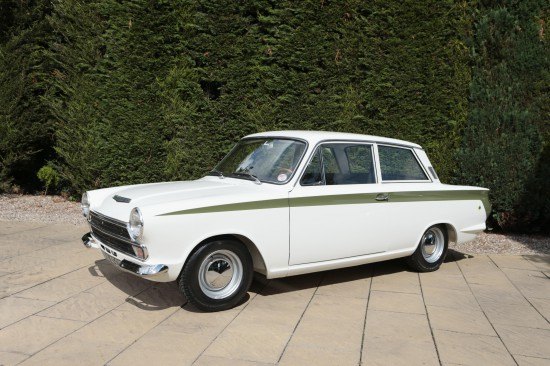




















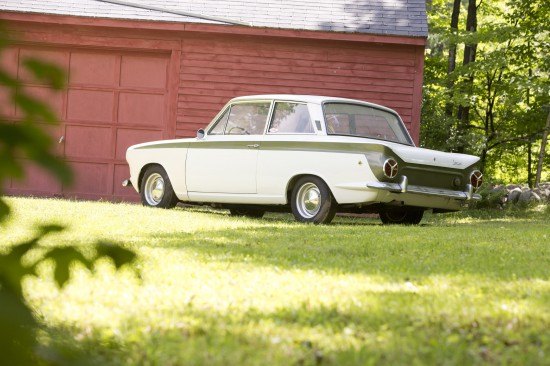















































































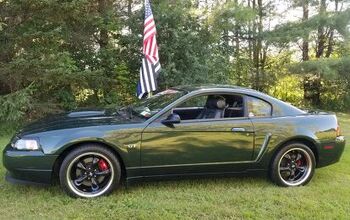

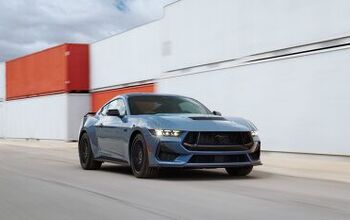



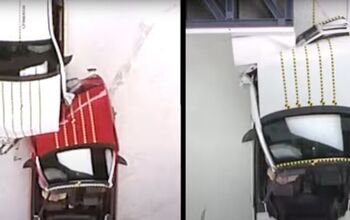
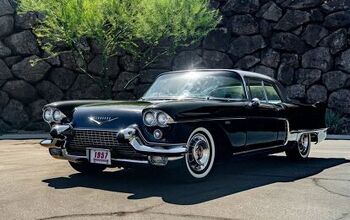






Comments
Join the conversation
Great story Ronnie. BTW, anyone that has commented HAS to belong to the 50 years + club. Including ME. Sad that this story doesn't generate the same amount of participation as some new lame-ass SUV/CUV.
The first car I ever drove, back in 1976, I was 17 years old, the car was a white 1.5 liter 1964 Cortina. I loved it back then but at the same time I wanted a newer one.